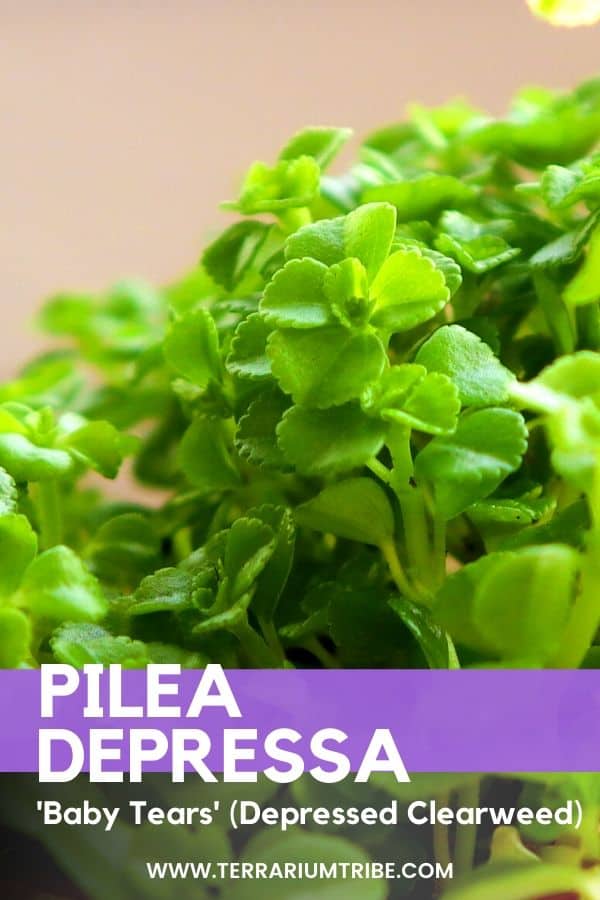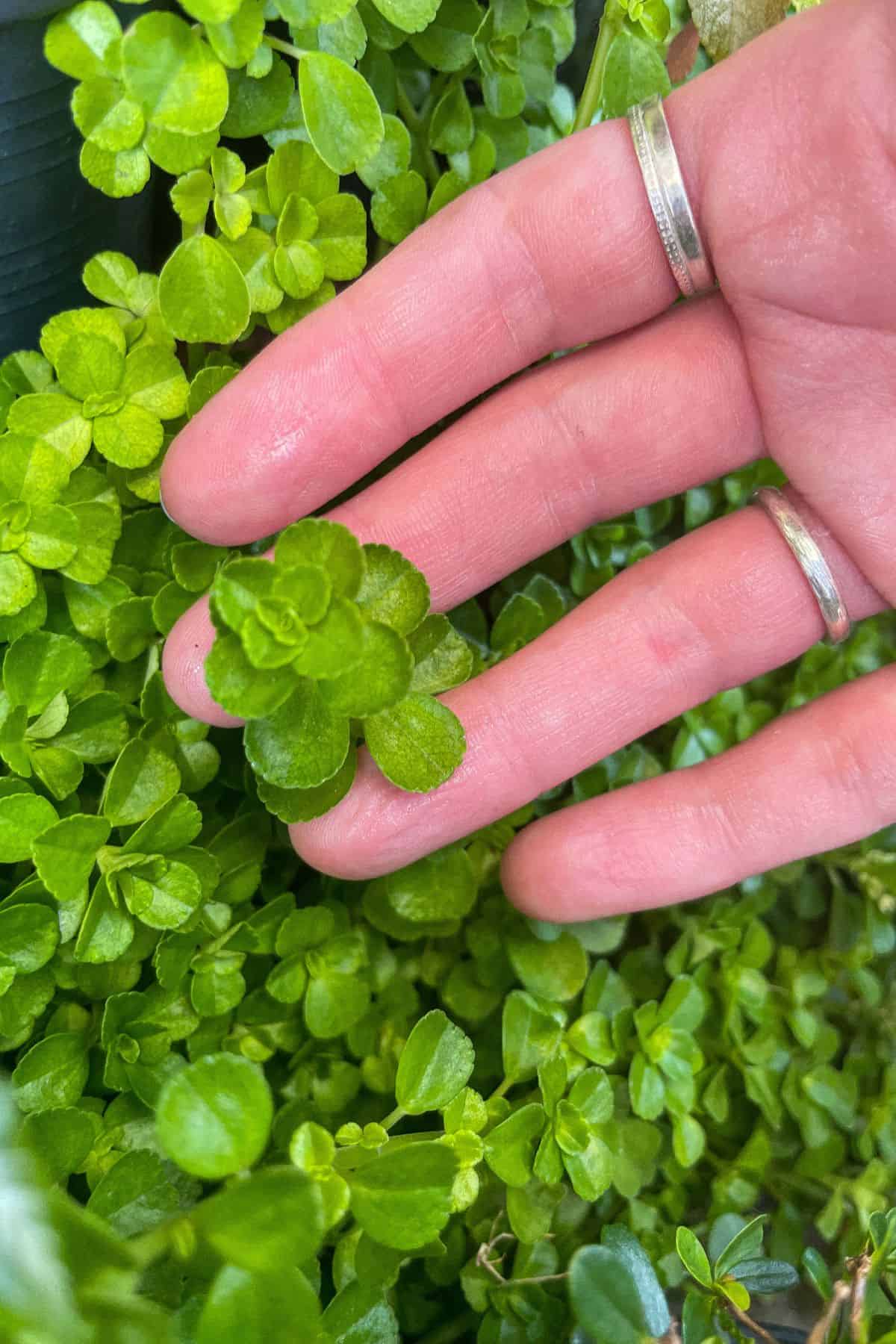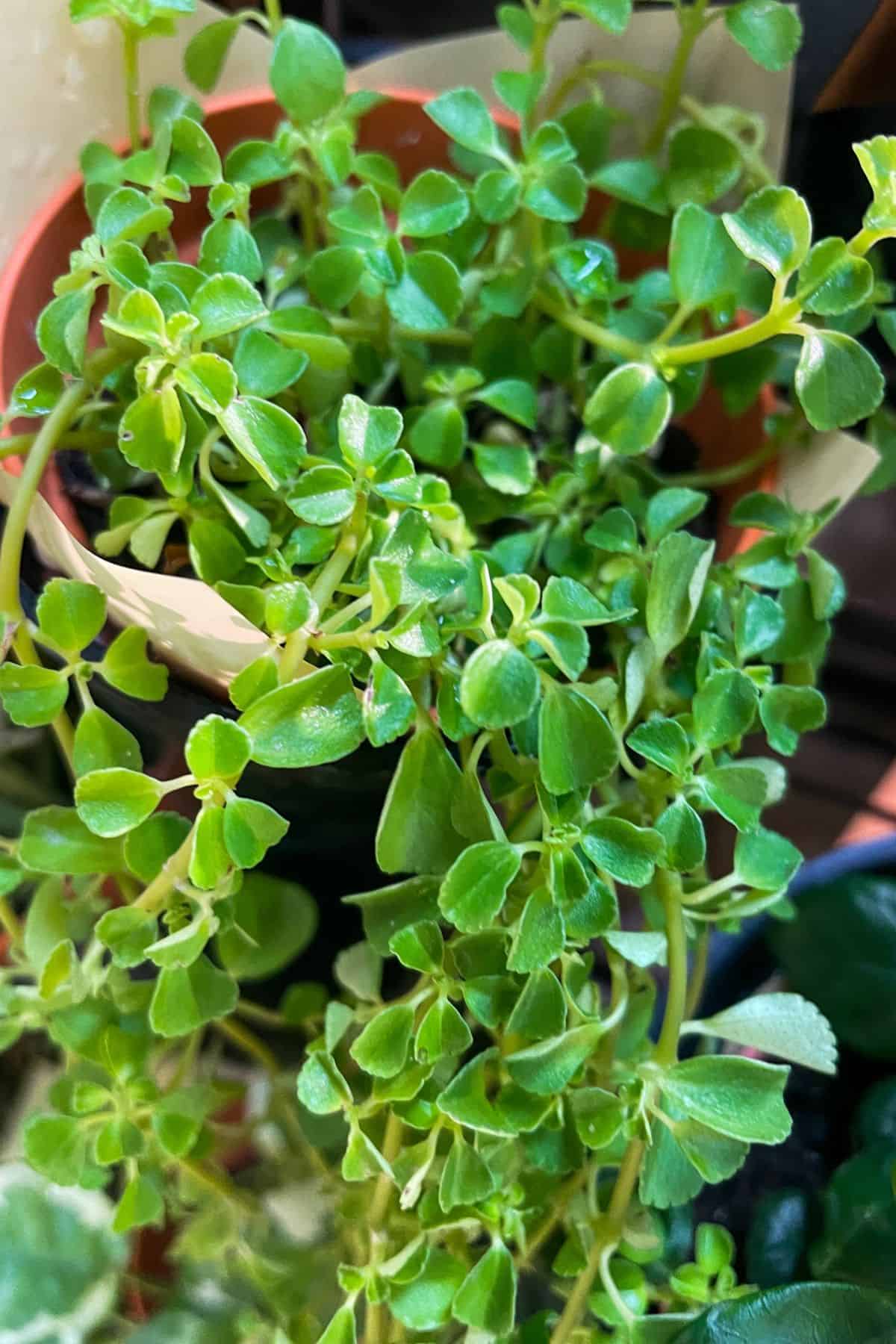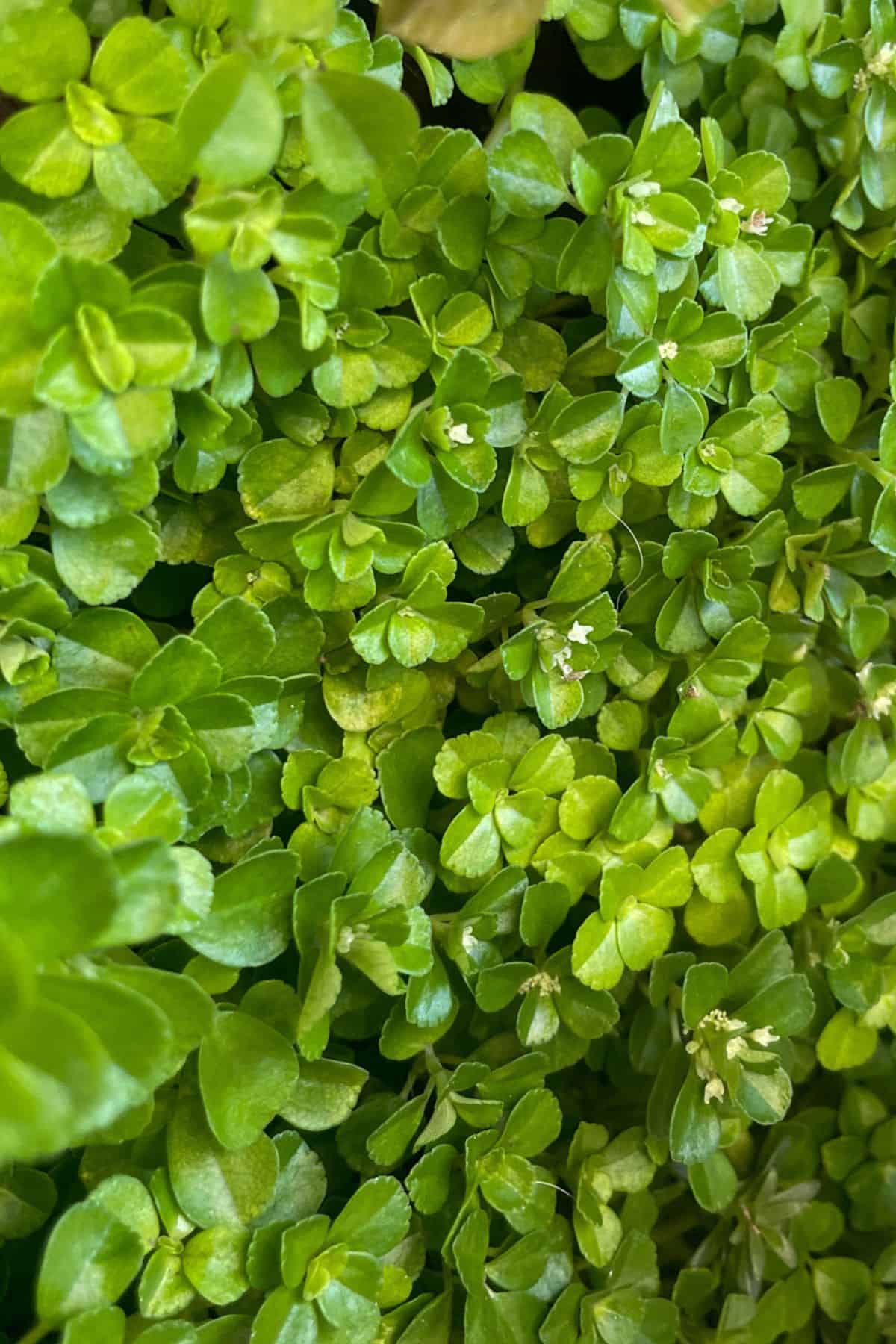Pilea depressa ‘Baby Tears’ is a gorgeous little trailing plant that’s sure to win the hearts of many a doting plant parent.
Not to be confused with the popular Baby Tears Plant (Soleirolia soleirolii), this compact vine has a dense foliage of bright green leaves with delicate, often ruffled edges.
She may look fragile, but she’s surprisingly tenacious.
The miniature stature and undemanding nature of this beautiful Pilea make this species an easy choice for terrariums and homes alike.
Stick with me to find out how to keep the soft foliage of this plant happy and healthy!

An Intro to Pilea depressa
Native to Mexico, this tropical charmer is a versatile plant.
Looking sort of like a 3 (+) leaf clover on a trailing vine, Pilea depressa packs a lot of texture into a tiny package.
With each new set of leaves overlapping the last on the vine, the resulting effect is like an interlocking wall of soft, plump foliage.

This effect makes Pilea depressa such a fantastic ground cover plant for terrariums.
Alternatively, they look beautiful when they’re mounted high – either in the home or on a terrarium background – and allowed to cascade over an edge.
Where to Buy Pilea depressa ‘Baby Tears’
See the links below to purchase from reputable terrarium plant shops and marketplaces (may include affiliate links).
Pilea depressa Care & Growth
At a Glance
| Plant Type | Vine |
| Lighting | Medium – high indirect light |
| Temperature | 55-80°F (12-26°C) |
| Watering | Regular, even moisture |
| Humidity | High humidity (60-90%) |
| Growth | 3-10 inches |
Lighting
Pilea depressa will grow in various lighting conditions, but an area that receives lots of bright, indirect light is optimal for growth.
Under bright light, this plant will have a thick, prostrate (mat-forming) growth pattern, resulting in a healthy and vibrant look.

Alternatively, in low light, you’ll see more leggy growth as the plant grows further to the light source. Though I don’t think this looks as charming as a denser plant, it will fare just in lower light conditions.

Just be sure to avoid areas with lots of direct sunlight, as the delicate leaves can quickly scorch.
Watering
Regular, even moisture is the best way to achieve a happy and healthy plant here.

That being said, I’ve found Pilea depressa to be surprisingly drought-tolerant and have had more issues with overwatering than underwatering.
It won’t mind drying out a little between waterings, but overwatering this species in a terrarium can quickly lead to rotting (I used it in my first-ever terrarium attempt, and the whole thing rotted within a week).
So, go easy on the water when establishing a new terrarium container, the high humidity of a sealed environment is arguably much more important, and will offset some of this challenge.
And as you’d imagine, if you’re keeping your depressa as a houseplant, it will require a pot with drainage holes.
Best Substrate/Soil for Pilea depressa
Pilea depressa isn’t an overly demanding species in what it’ll grow in.
A tropical substrate should do the trick in terrariums and the home.
It will really thrive in a substrate that can hold plenty of water to satisfy its high moisture requirements but also provides sufficient drainage to prevent root rot. I typically use coco-coir-based substrate mixes with chunky additives.
👉 Our tropical substrate mix is a great fit here.
Temperature & Humidity
While this tropical species isn’t susceptible to temperature (55-80°F will be just fine), it needs a high humidity level.
In fact, low humidity can spell the end of most members of the Pilea family, so try to keep your home consistently above 60% or stick it in a terrarium.

A good trick to boost humidity is by keeping watering cans dotted around the room for the water to evaporate.
Grouping plants works brilliantly too, which justifies getting even more plants, right?
Pilea depressa Growth & Flowers
Under the right conditions, Pilea depressa ‘Baby Tears’ can grow very well. Shall we say… too well?
In a terrarium, you can enjoy it as a thick mat of ground cover, or it’ll happily creep across a background/hardscape as long as you can provide consistent moisture.

As a houseplant, pop it on a high shelf or in a hanging pot to make the most of its trailing vine qualities. It won’t take long for it to start spilling over the edges in all directions.
Thankfully, if it gets too long or bushy for your liking, it’s super easy to prune and keep its growth in check. Just snip as you see fit.
It’s also a flowering species, but like other members of the Pilea family, they’re not particularly loud.

How to Propagate Pilea Baby Tears
Pilea depressa propagation is super straightforward via stem cutting.
As long as your cuttings include a few inches of stem and a root node, they should readily root up in water and soil.
Thankfully, a tropical terrarium’s extra warmth and moisture are the ideal natural conditions for rooting up fresh cuttings.
I regularly use it in my terrarium builds, and it couldn’t be easier to propagate on the go. I chop a strand off my mother plant and drop it in the terrarium; a couple of weeks later, it’s already rooted and established itself.

I have tried with water propagation too, but with less success. Some of the cuttings thrived, but a few rotted. Putting them straight into a closed terrarium environment has worked every time.
Alternatively, if you have a large plant, you can split the roots and foliage just like you would a fern.

Varieties & Similar Plants
The Pilea genus is full of wonderful diversity, and many make perfect terrarium plants (e.g., Pilea involucrata, Pilea mollis, and Pilea cadierei).
However, the depressa is one of the few trailing species, the other major player being the beautiful, silvery Pilea glauca.

And happily, there are a couple of other notable depressed varieties worth your attention, including P. depressa ‘Sao Paulo,’ which has darker green leaves and burgundy undersides, and P. depressa ‘Tiny tears,’ which (as the name suggests) even smaller still.
However, the jury isn’t entirely decided on whether Tiny Tears is an established variety or not…
Frequently Asked Questions
With the right conditions, Pilea depressa can be a fast-growing plant. It can quickly form a thick mat or long trailing vines as long as it has plenty of moisture and humidity.
Though the leaves of Pilea depressa are quite plump, it’s not a succulent and has much higher water requirements than its succulent equivalents.
As a genus, Pilea tend to be non-toxic so Pilea depressa is one of the safer houseplant choices.
